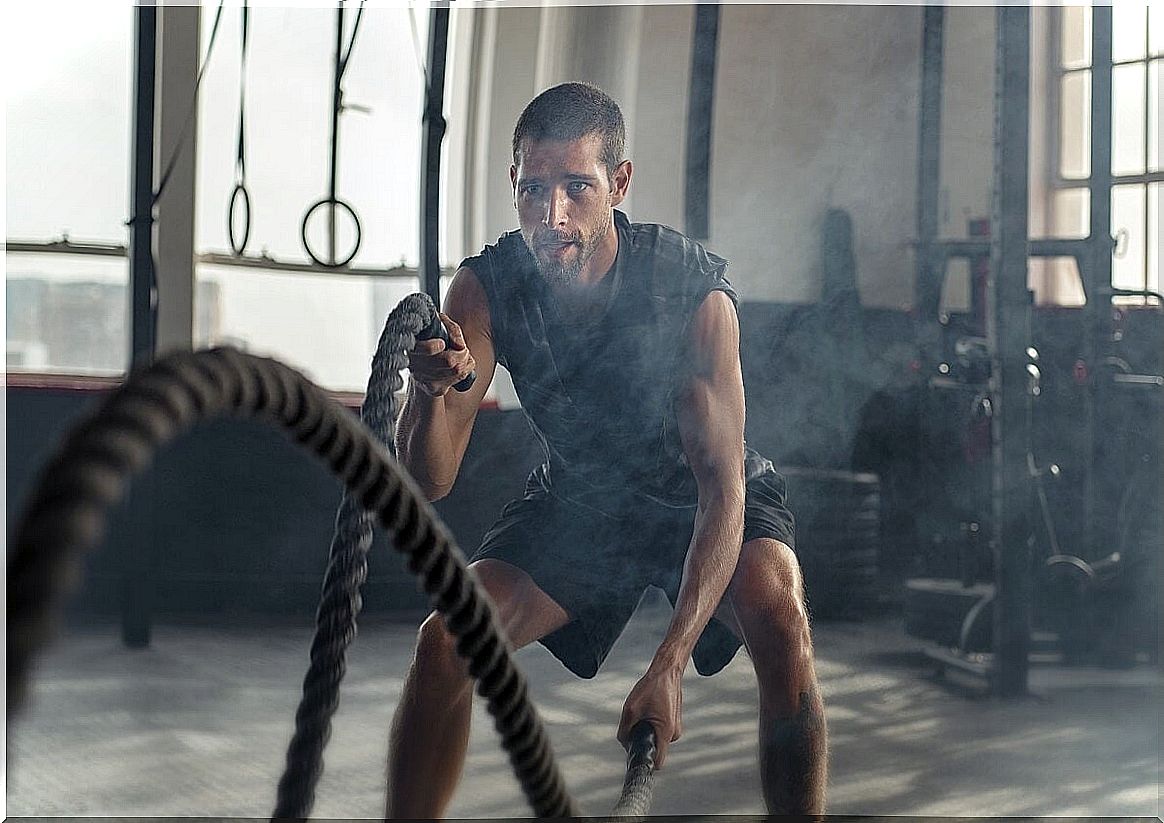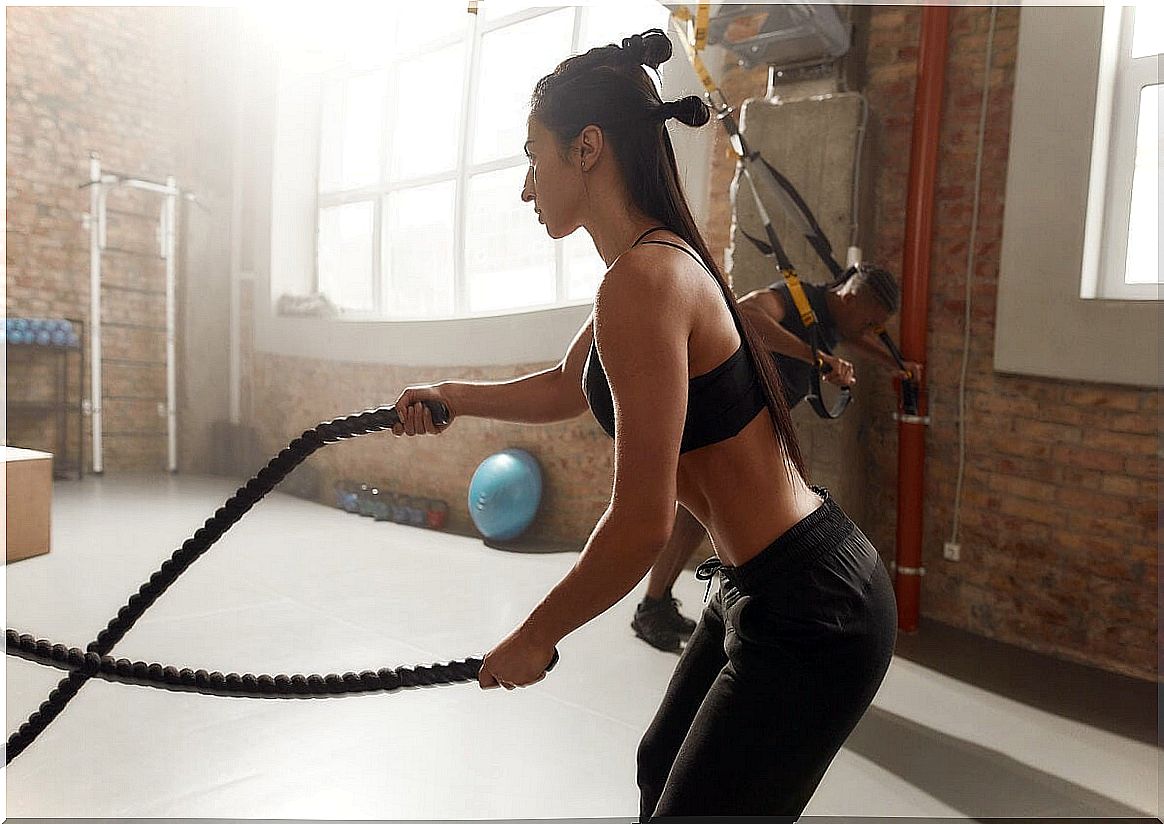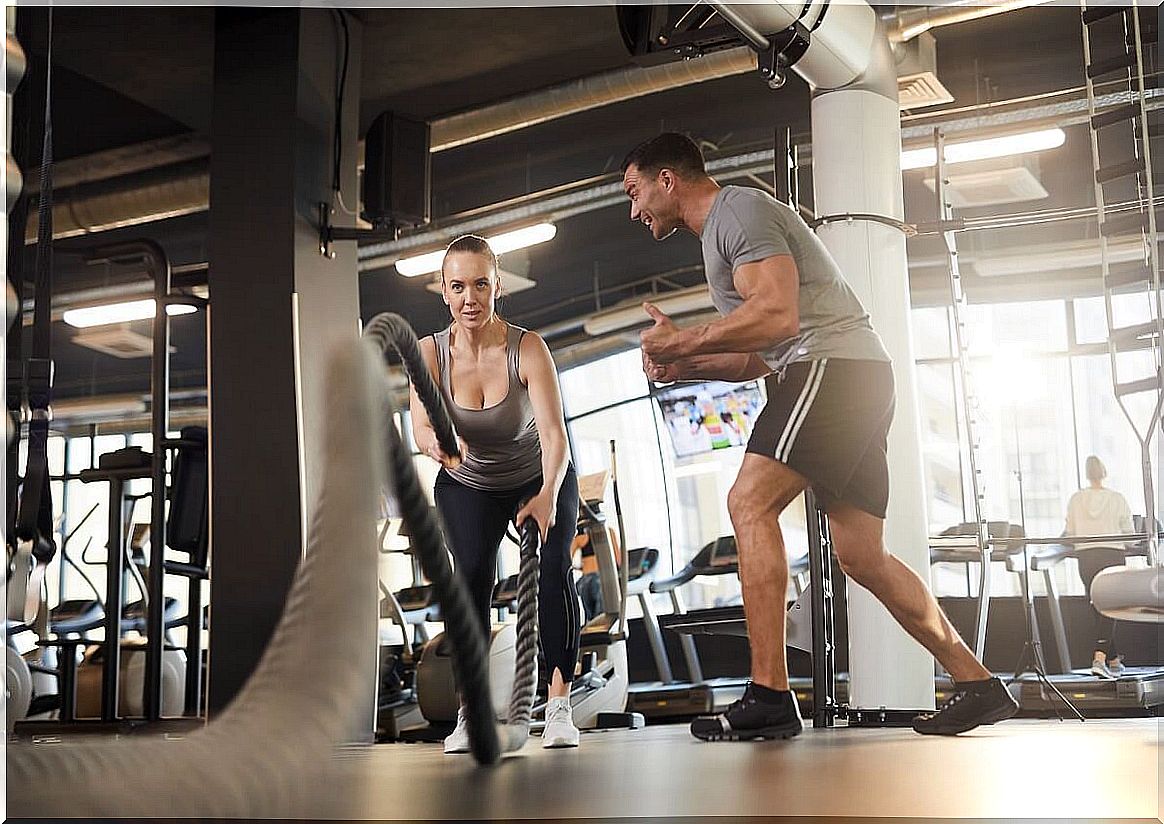Rope Training: What Is It And What Are Its Benefits?
Rope Training is a physical conditioning modality that is on the rise due to its remarkable intensity during concise routines to achieve complete muscle development. Know its benefits!

Training options continue to expand, but few offer the benefit of time. That is, short routines with quick results. This makes the Rope Training gain integers from its accurate exercises and practicality in execution.
This time, the battle ropes are the protagonists of the physical demand. Although the arms are exhibited as the area of greatest exposure to benefits, the truth is that muscle work is amplified. In that sense, we are going to know what this discipline consists of, what are its benefits, the types of exercises and some tips to start practicing.
What is Rope Training?
The Rope Training is defined as training with cords having certain features as to the thickness, weight and length. The basic sequence of the exercises starts with holding the ropes and performing repetitive movements with the arms. Thus, within the classic movements is the circular, shock and wave mode.
On the other hand, there are no limitations regarding the initial position, since it allows from routines while sitting to involve the abdomen to a greater extent, to squats or lunges depending on the level of demand desired.
Regarding the duration and segmentation of the exercises , it opts for intervals that oscillate between 20 and 30 seconds (with limited rest after each work). The objective is that the complete routine is established in a maximum of 30 minutes, always looking for the intensity to be high.

Muscles that are worked with Rope Training
The dynamics of the exercise tell us that the upper body has primacy in relation to muscle gain. This includes the deltoids, rhomboids, traps, triceps brachii, and biceps brachii.
Likewise, the middle zone is involved in muscles such as the rectus abdominis, the quadratus lumbar, the pyramidal, the transverse abdomen and the external and internal obliques.
In case you want to affect the lower body, it is necessary to do combinations of exercises (with squats or lunges) that can strengthen the quadriceps, the hamstrings, as well as the gluteus medius, major and minor.
Benefits of practicing Rope Training
The practice of Rope Training leaves benefits associated with results in almost the entire body, reduced execution time, adaptability to different routines and more. Therefore, we are going to detail separately what are the advantages of adopting this discipline.
Expedited conditioning
Time is a great limitation for a huge sector of the population that wants to get involved in exercise. At the same time, it makes elite athletes reconsider incorporating other training modalities into their day-to-day life. In this way, Rope Training has the benefit of not requiring more than 20 or 30 minutes to be effective.
Multiple exercise
It works on different areas of the body at the same time, since the movement of the arms is combined with multiple support options and exercises (abdominals, squats, lunges, among others).
Burning calories
The Rope Training is compatible with interval training workouts high intensity (HIIT) and CrossFit. Consequently, within an average session with the ropes, approximately 400 calories can be burned in just half an hour.
Substantial muscle improvement
Muscle enhancement includes toning, power, and strength gain. In addition to this, it allows the increase in muscle mass with the gradual increase in the weight of the strings. To close this particular, a greater number of muscle fibers is also worked when compared to other types of training.
Types of exercise to train with Rope Training
In establishing the types of exercise to train with Rope Training, imagination is the limit. This is because adaptability to different modalities tends to be interesting. However, these are the main practices that are carried out.
Alternating wave
The upward and downward movement is done with one arm. The action is then repeated with the other arm. Then, the rhythm of the wave is taken and the sequence is replicated for a time that ranges between 25 and 30 seconds.
Parallel or double wave
The hands holding the strings must start from the chest and begin the movement in parallel, that is, respecting the same execution time. The amplitude that the strings generate will depend on the level of demand that is desired. Therefore, if you are in a learning stage, forming smaller waves can be useful.
Side wave
The work starts from the maximum opening of the arms towards the sides. Then, the arms are brought together quickly and forcefully to a safe distance to avoid clashing between the hands. The ideal is to preserve a balanced rhythm.
Whips
The difference between the exercise in the form of whips or blows and the parallel wave is that the movement of the arms has a much greater amplitude, since it begins above the head. Also, for greater damping of the force exerted, it is recommended to close each squat sequence.
Circular wave
Circles are made with the two arms in the same direction, varying in each sequence the favorable and counter-clockwise direction. This time, the greatest attention should be directed not to cross the ropes.

Tips to start practicing Rope Training
With all of the aforementioned, it is time to start practicing with the battle ropes. However, we share tips that can help you adapt to a new way of training.
Remember muscle rest
The Rope Training gives the feeling of not cause more wear on the muscles performed in 30 minutes. This leads to reduced breaks between routines, increasing the risk of injury.
If so, it is essential to rest and take the necessary muscle recovery time before training again. Otherwise, the problems will recur.
Use the correct technique
The strength used and rapid mobility can be counterproductive if the technique recommended by specialists is not respected. What does it consist of? Well, keep your back straight, establish a reliable point of support and make a grip that does not adversely affect the wrist joints.
Precise rope selection
There are ropes of variable weight and thickness, which are adapted to all kinds of physical conditions. It is very important to make the selection according to the capacity with which you have to avoid disproportionate wear and tear during the routine or possible injuries.
Final Recommendations on Rope Training
It is recommended to see a specialist before starting Rope Training if you suffer from any physical inconvenience or if you have overcome a major injury to the upper body.
Increasing the intensity and load of training should be done with caution without accelerating the evolutionary lapses too much. High intensity can lead to joint deterioration if not handled judiciously.
In short, Rope Training has important benefits for most muscle groups as long as it is used as a supplement and is away from excesses.









